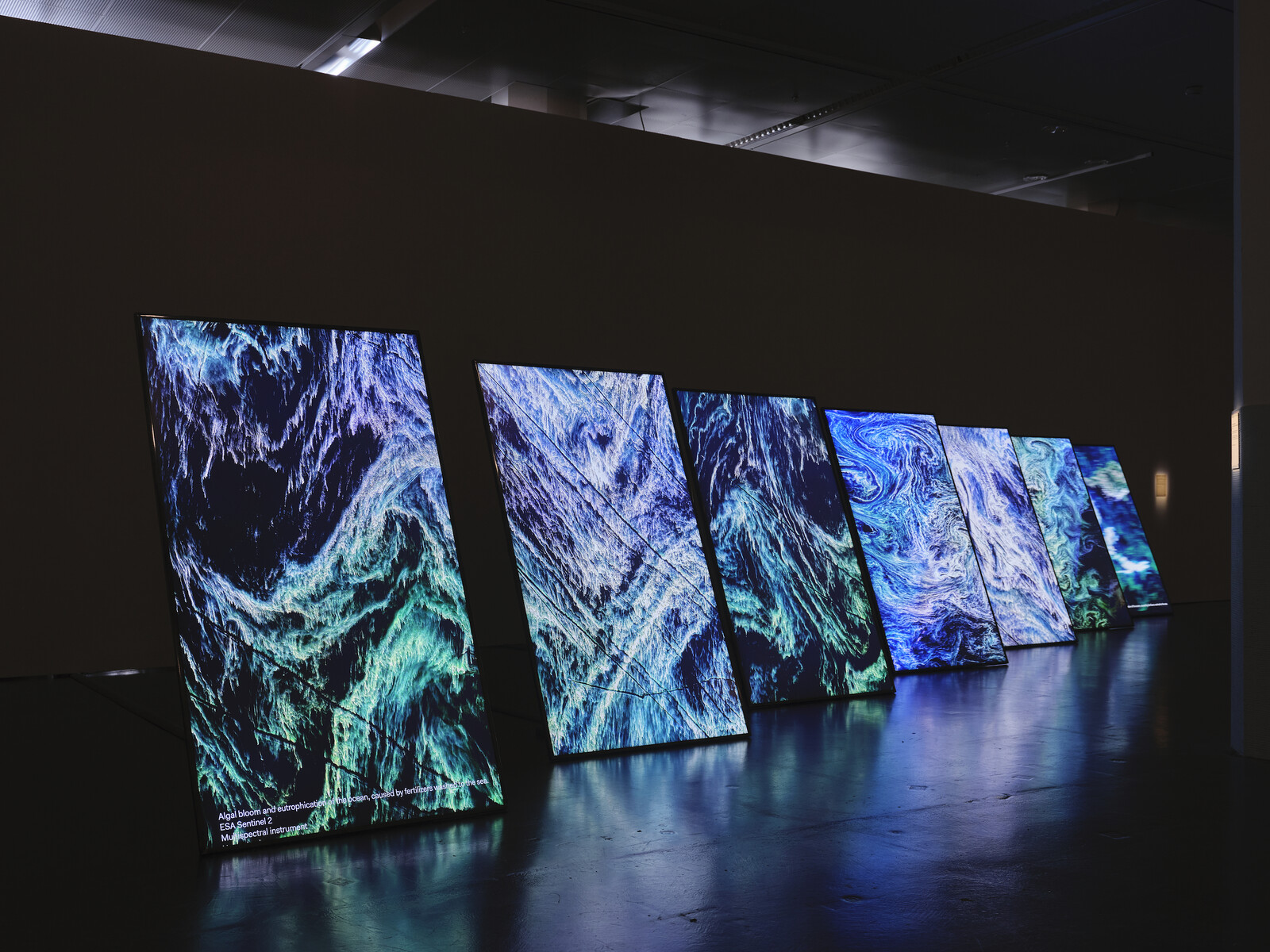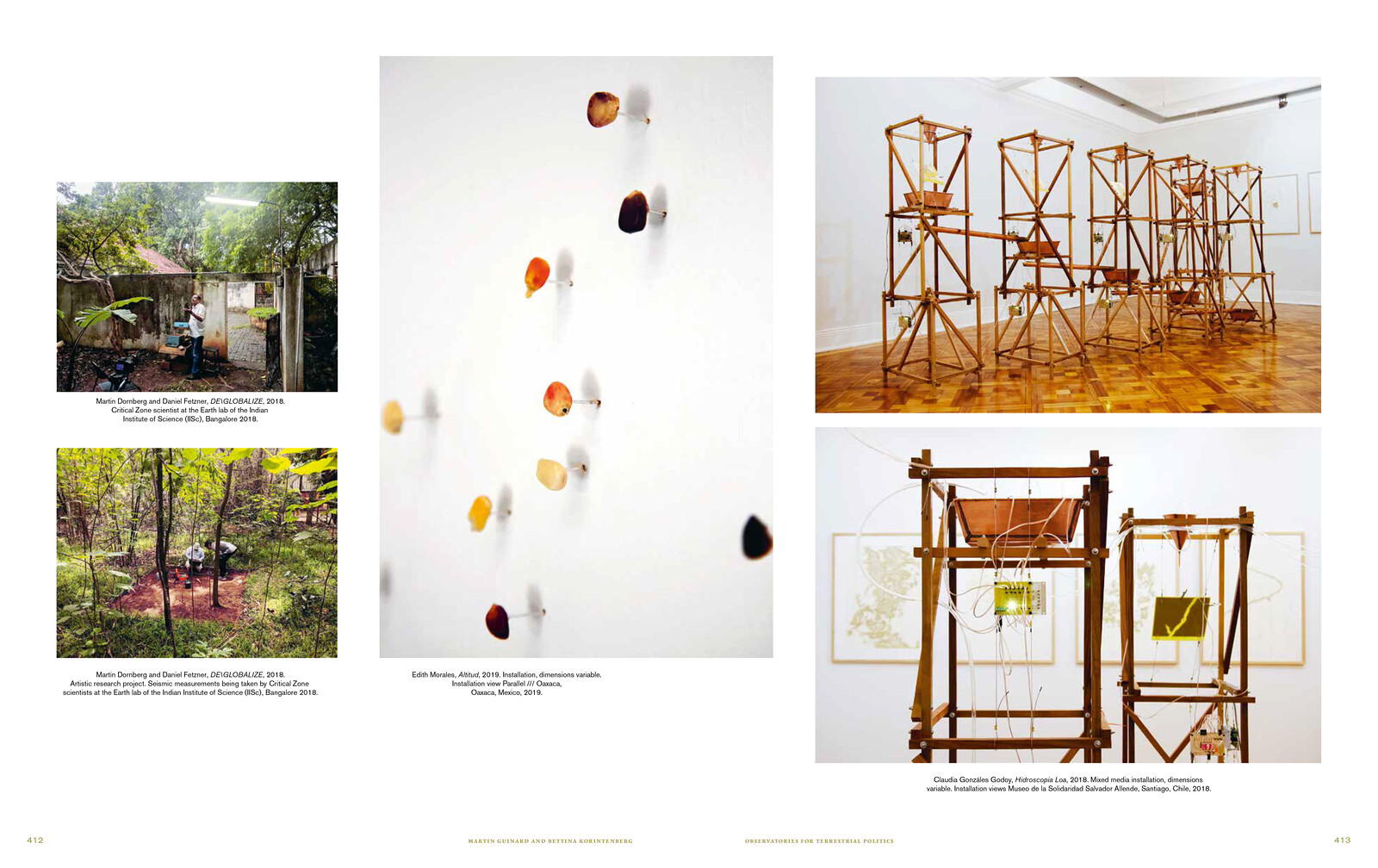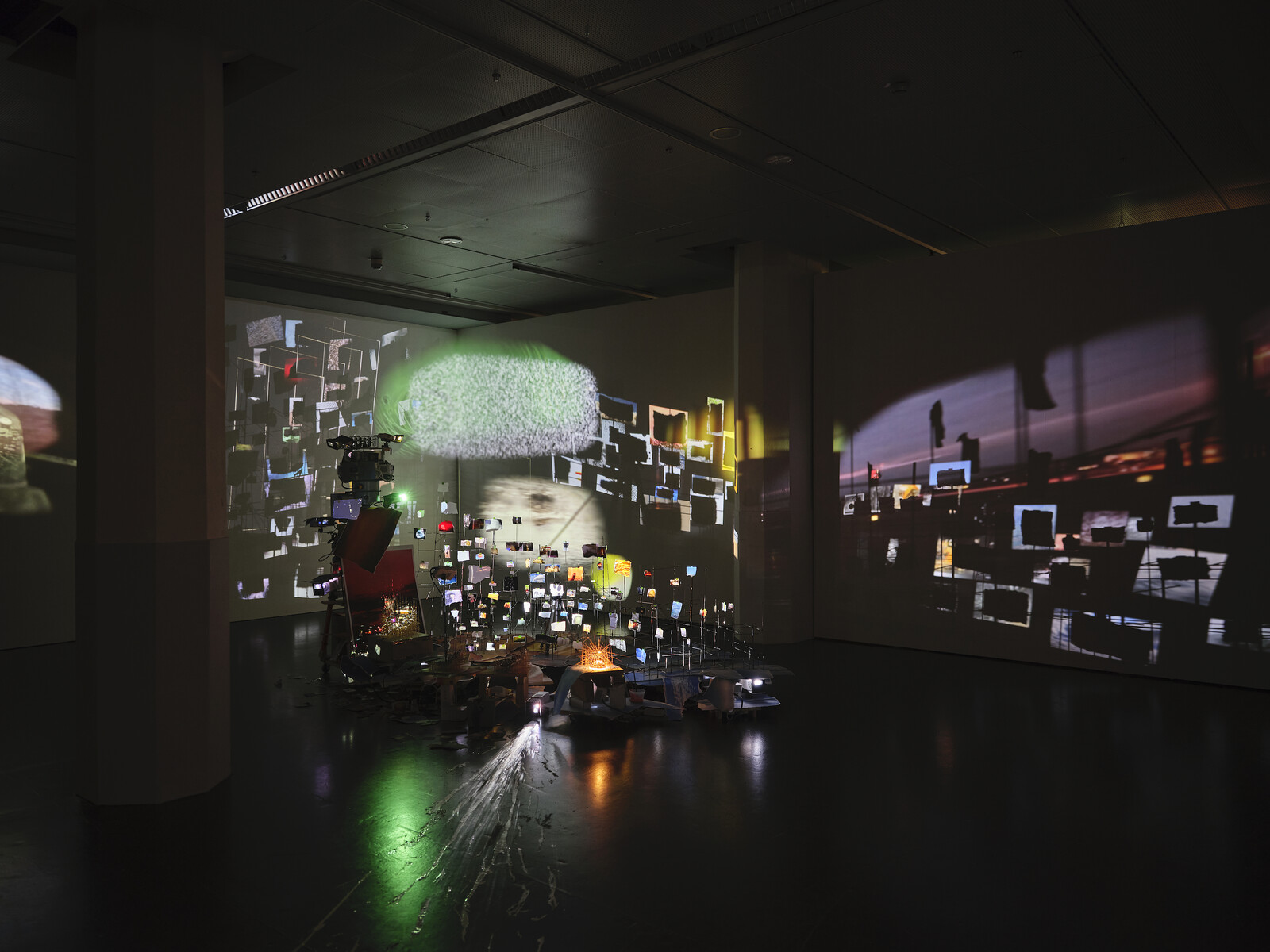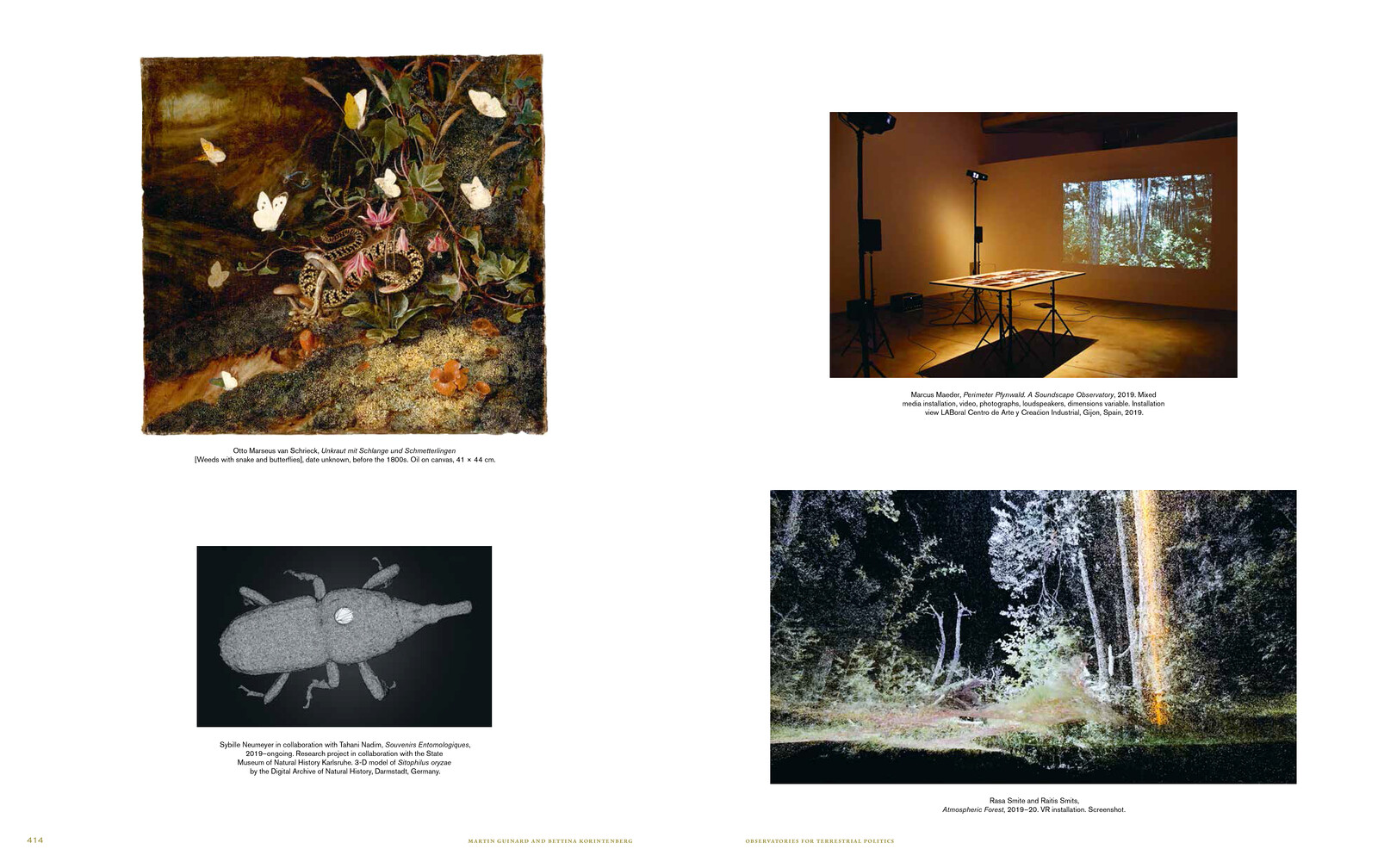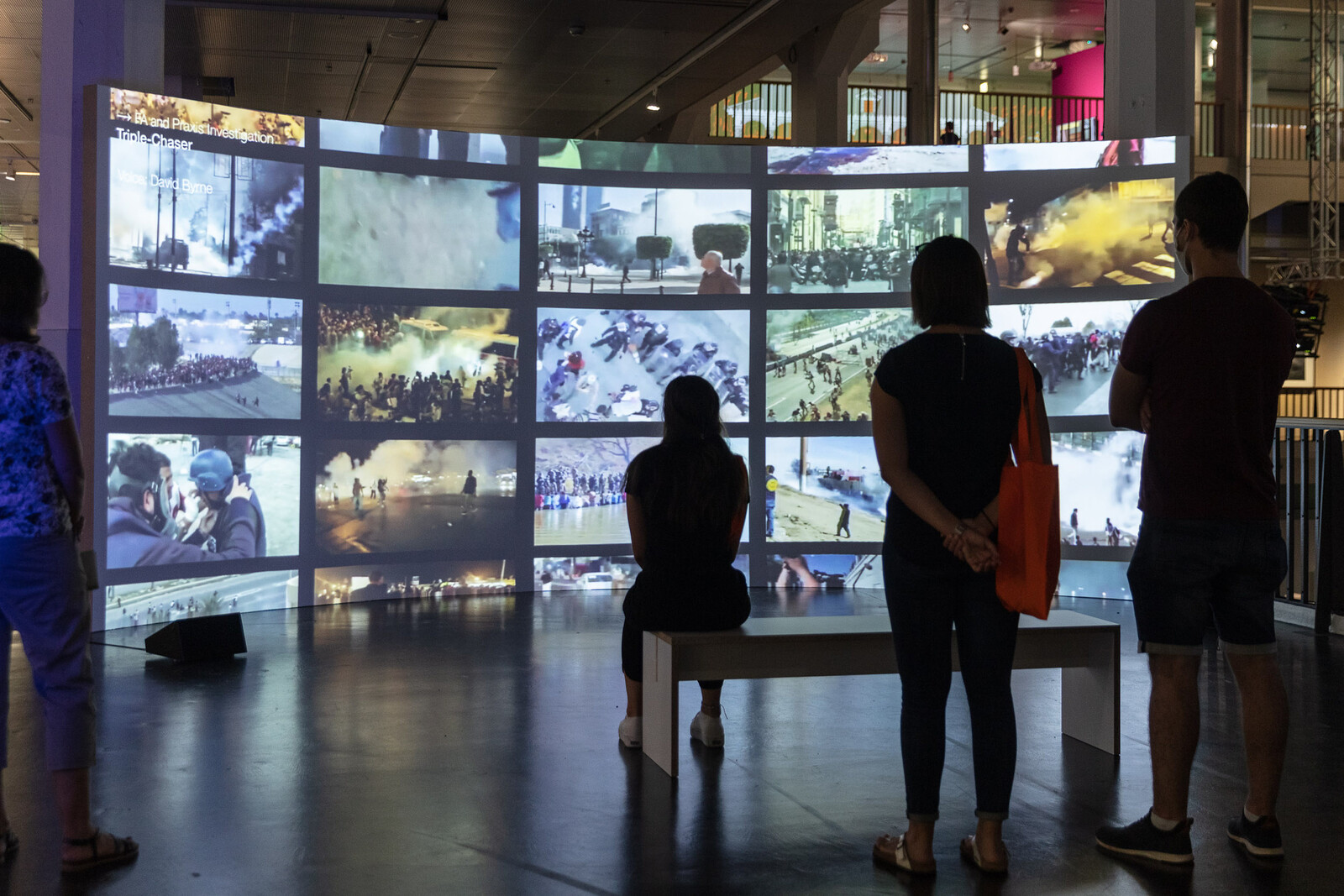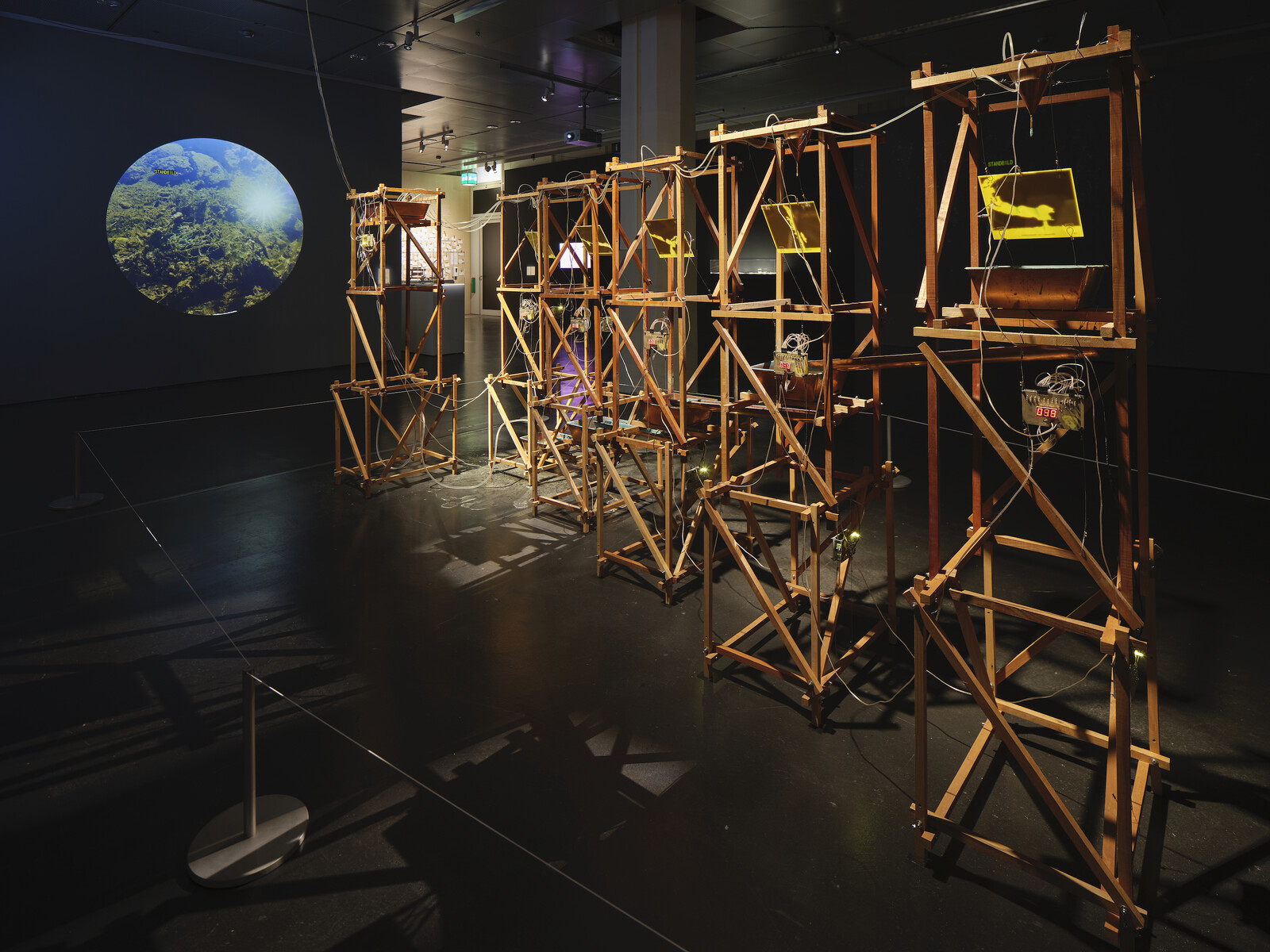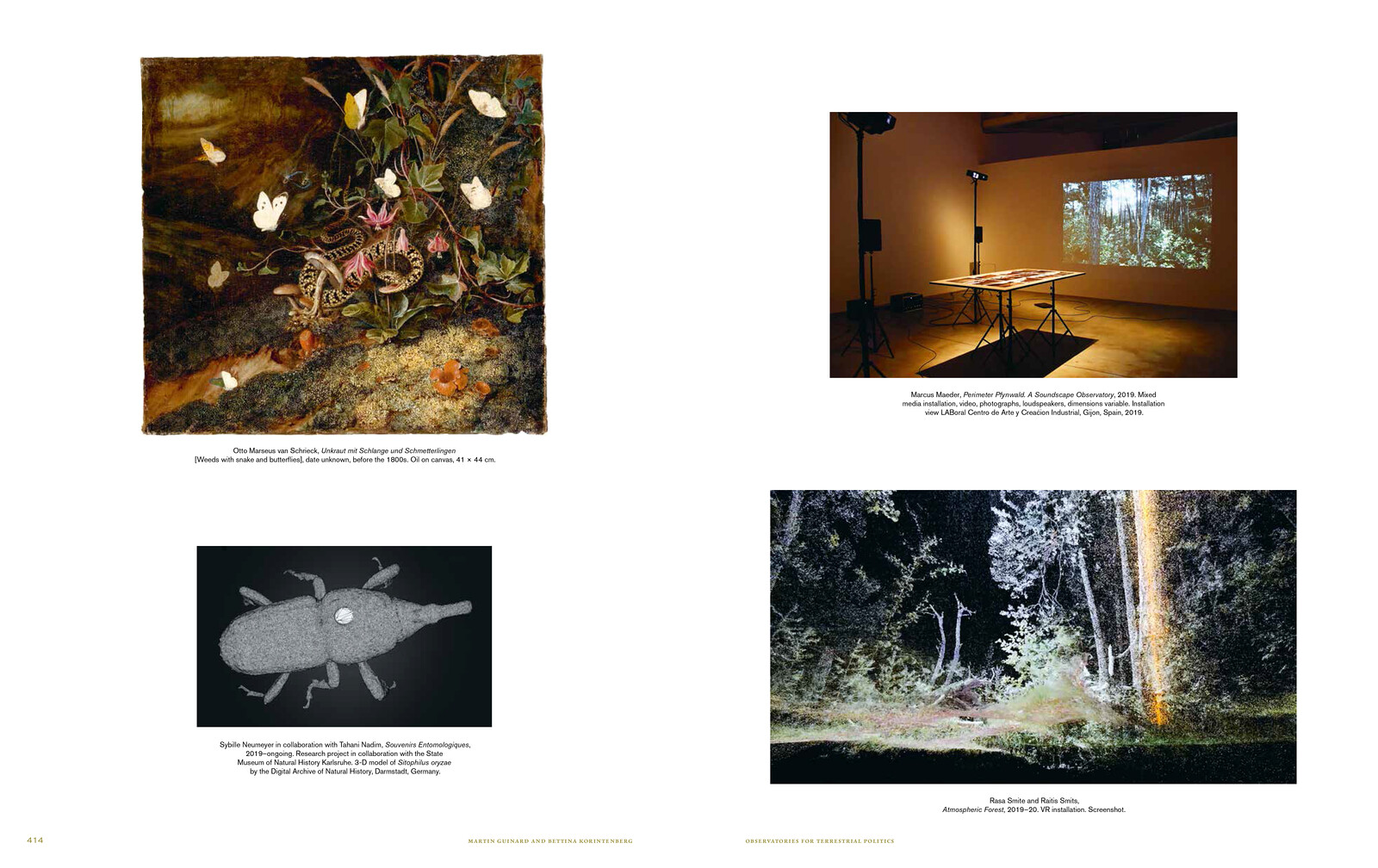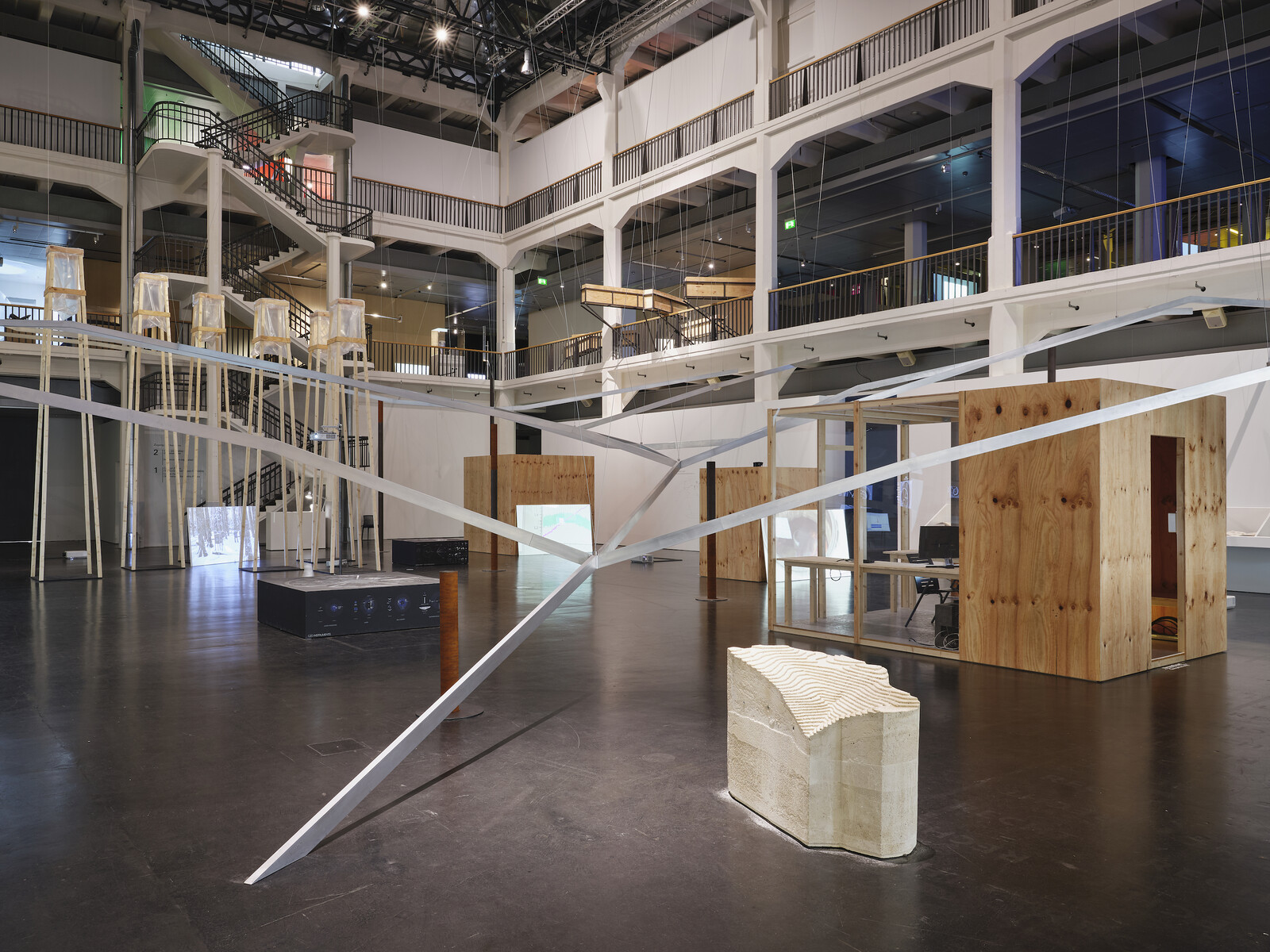One of the many ways that I ameliorated my lockdown boredom was to watch David Attenborough’s new Netflix show Our Planet. Each episode begins with a shot of an “Earthrise”—our planet emerging into view as if we were standing on the moon—while the nation’s favorite grandfather intones a warning about the declining “wonders” of the natural world, and insists that we must act so that “people and nature thrive.” These are laudable sentiments but, as suggested by Critical Zones, a gargantuan new collection of multi-disciplinary writings edited by Bruno Latour and Peter Weibel and published alongside the eponymous exhibition at Karlsruhe’s ZKM Center for Art and Media, such planetary long-views from space can be part of the problem.
Attenborough’s narrative of biodiversity loss focuses on one species’ (humans’) capacity to wreak massive environmental change in the fifty-odd years since Earth was first photographed from the moon. However, as Timothy M. Lenton and Sébastien Dutreuil’s entries in Critical Zones explain, life (as in the totality of everything that lives) has always adapted the planet, albeit on a different time scale. Life is not a passive actor adapting to an inert environment; it transforms that environment, making it habitable. Earth is, in some ways, alive—though not in the same way that an organism is. The name for this planetary phenomenon, most associated with the work of the scientists James Lovelock and Lynn Margulis, is Gaia.
The place where this transformation happens is the “Critical Zone”: the area near the surface of the Earth, the planet’s thin but vital skin, where organisms regulate the flow of resources required to sustain life. Earth’s Critical Zone is not homogenous, but rather is constituted by a network of interrelated, complex, and co-generated co-habitations (hence the book’s plural title). Humans are not separate from the “natural world”; they are enmeshed and co-dependent. Moreover, the state of these zones has become critical in the temporal sense: threatened by inter-related human-caused environmental crises—such as climate change and biodiversity collapse.
The show at ZKM—which curators Latour and Weibel, in collaboration with Martin Guinard-Terrin and Bettina Korintenberg, describe as a “thought exhibition”—features artists’ sculptures and installations alongside the work of scientists, activists, and designers; the idea being that together, the exhibition functions as an “Observatory for Critical Zones” in which viewers can familiarize themselves with this new paradigm. Reflecting this cross-disciplinary approach, the heterogenous selection of works range from seventeenth-century Flemish painter Joos van Craesbeeck’s Bosch-inspired nightmare The Temptation of St. Anthony (c. 1650) to Forensic Architecture’s 2020 videowork Cloud Studies, which presents the various toxic vapors that drift across ecosystems and alveoli—tear gas, herbicides, the smoke of forest fires.
Thankfully, given that many of us currently face limitations on leaving the house, let alone traveling, these contemplative spaces are partly replicated online on the project’s extensive website, which hosts virtual tours, talks, and events. Rather than creating a catalogue that mirrors the physical exhibition, this volume is presented as a complementary but standalone publication through which to approach the multifarious dimensions of life, and living, in these critical zones. Its seventy or so pieces—punctuated by over 500 illustrations—range from artistic and scientific histories of key concepts (particularly changing senses of globe and planet, landscape, and nature), to investigations of particular environments such as data-mapped forests and abandoned toxic sites of extraction and disposal in Saskatchewan and Dzerzhinsk. Assembling such an interdisciplinary variety of knowledges and methodologies is crucial if humans are going to be able, as the title suggests, to “land on Earth.” Conceptually, if not physically, many humans are not on this planet: they are up in the sky with Attenborough’s Earthrise, looking at Earth as a whole and not at its fragile and heterogenous skin of critical zones. As Latour explains in his essay on Sarah Sze’s disorientating sculpture Flash Point (Timekeeper) (2018, and included in the exhibition at ZKM), which surrounds the viewer in projections that flicker across different surfaces, including their own bodies, “the Critical Zone cannot be escaped, cannot be judged from a distance.” There is no planetary view from without, only a variety of partial ones while enmeshed within.
This is why the arts play such an important role across this book. Aesthetics render these complex co-dependencies across different scales sensible and apprehensible. They are a vital tool in helping those floating in space become “terrestrial”—the third key concept structuring the book along with Gaia and critical zones. The terrestrial designates a kind of emergent possibility in which awareness of Gaia and the political combine, beyond the current disjunction between the world many humans live in (one of property rights, globalized consumptions, hard borders, and so on) and the finite and fragile world they live from.
The volume’s closing piece—Donna Haraway’s epistle on the importance of sf (the lower-case term she uses and which encompasses science fiction, speculative fabulation, and situated feminisms)—makes the case that it matters “what stories tell stories.” Critical Zones showcases some of the diversity of myths, models, datasets, and cartographies that different disciplines and discourses mobilize to render and narrate the changing planet and its critical zones. Gaia itself is a story of systems and feedback loops refracted through the arts: it was the novelist William Golding who recommended to Lovelock that he use the name of the Greek goddess to describe his theory. Gaia is also a concept that itself evolves in response to unfolding environmental crises. Jeanne Etelain argues in her entry on the history of zones from the ancient Greeks to Andrei Tarkovsky that we should conceptualize Gaia as a lover rather than a mother, because the former offers a better model of reciprocity and co-dependence. This impressive book sets out a variety of ways we might not only begin to know the critical zones of our planet but, as Etelain puts it, how we might “caress” and otherwise care for and stimulate them.
Critical Zones: The Science and Politics of Landing on Earth, edited by Bruno Latour and Peter Weibel, is copublished by MIT Press and ZKM | Center for Art and Media Karlsruhe.
